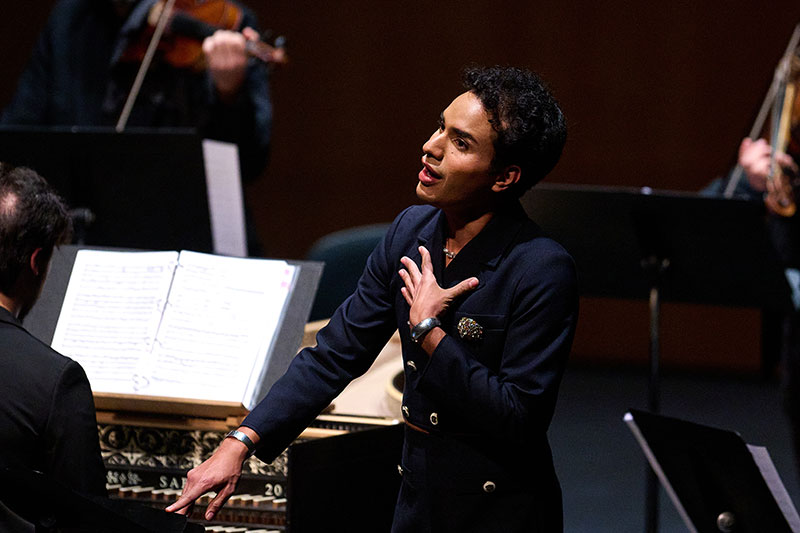

By Samuel Mariño + Gabta Consort
Director and violin soloist: Assisted by Stefano Barneschi.
What is it about? Works by Purcell, Händel, Geminiani, Vivaldi and Graun.
When: May 9th.
In which: At the Baluarte Palace in Pamplona.
----------------------------------------------------------------
A recital by Samuel Mariño is not only an opportunity to enjoy a beautiful voice. It is an opportunity to verify that the world of the opera, of the lyrical recital in this case, can have a different aesthetic. And it is also an opportunity to verify that the world of singing is not limited to Caucasian, European and artists of good family, as Mariño himself says. Other realities can and do exist on stage to make you dream.
Mariño’s case, in terms of vocal dissertation, is special. During his adolescence, there was no usual change in his voice, and he maintained a tenuous dissertation. For this reason, the soprano tesserum of a man is one of the rare cases, naturally, without the use of a falsetto.
In addition to being one of the most attractive voices in the current lyrical scene, he has also distinguished himself as one of the most daring, transgressive and proclaiming singers on stage. He loudly proclaims his identity – as a queer man – and his homosexuality, and seeks to transform the still encorsioned environment of classical music. His Baroque opera recitals live like a show of transvestism and vocal virtuosity, with an increasing number of fans coming together around the world, especially among the new generations.
This time Mariño captivated us with an elegant baroque music, cared for, full of details of great musicality, and for what we are accustomed to, without a doubt, a curious but elegant staging. She appeared in an elegant feminine outfit with high heels. Many sopranos would like to have a look like this.
And now, what matters most to us: his voice. Pictures of Händelen Lotario: From the first aria Scherza in mar la navicella, we were able to verify that we were in front of a special voice. His colorings, his brilliant avatars and his beautiful phrasing were the hallmarks of the entire program. It is true that it does not have a large volume of voice and its harmonics are limited. It's not a big voice. But his intense interpretation, his emotional load, and, in the technical field, as I have already said, his great ease for colourists, make him a special and very good interpreter.
One of the most beautiful moments was Lascia la spina, from Händel’s oratory Il trionfo del tempo e del disinganno. Mariño interpreted it with an impressive delicacy and nuances that are not heard in other versions.
Of course, we must highlight the work of Gabta Consort, whose work as director and concertmaster included Stefano Barneschi. Both in their instrumental participations and accompanying the soloist, the band was elegant, refined and fully compacted.